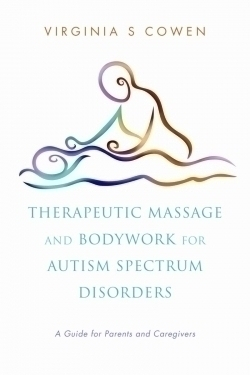Therapeutic Massage and Bodywork for Autism Spectrum Disorders
A Guide for Parents and Caregivers
Highlighting varied approaches to the science of touch, massage therapist, educator, and author Virginia Cowen provides resources for parents committed to enhancing the health of their children with autism spectrum disorders (ASD). With the many types of bodywork and energy work available, caregivers will be able to identify a modality (or combination) that will supplement therapies already in place for children with diverse sensory challenges.
Organized in three parts, this invaluable compendium starts with the science and physiology of touch, how nerves, muscles and joints work, and the sensory disruptions that afflict those with ASD. Part 1 recaps the history and approaches of Western versus Eastern massage and bodywork and provides a foundation to understanding sensitivities of individuals with ASD. Massage and bodywork provide benefits such as “helping directly train the sense of touch.” This section also clarifies “how massage can affect sensory processing issues associated with ASD.”
Part 2 will benefit the ASD community along with anyone with an interest in massage and bodywork, eager to understand what distinguishes one approach from another. Each type of massage or bodywork includes brief definitions, an historical overview, explanation of when/where/how each is used with clients, and indications of benefits in certain ASD challenges, briefly recapping research or anecdotal findings.
The chapter on anatomy-oriented massage describes nine modalities characterized as “biologically based and somatically oriented. That means they are rooted in the anatomy and physiology of the body.” These include Swedish, sports massage, deep tissue, orthopedic, neuromuscular, myofascial, and craniosacral therapy.
Energy-based bodywork is distinguished as taking “a metaphysical approach to health and well-being … The connection between mind, body, and spirit is important.” The chapter includes thirteen modalities, including reflexology, polarity therapy, acupressure-based (e.g., Shiatsu), and non-contact energy therapies (e.g., Reiki). Other styles of touch-based therapeutic bodywork include active participation by the client, with five approaches covered.
Part three provides guidance on selecting a style of massage for particular ASD challenges, finding suitable practitioners, possible contra-indications, and special considerations regarding children and massage.
Costs pose a formidable barrier to alternative therapies. The author touches on parents learning the techniques from a professional to benefit their children. Given this approach, the author might have included a greater level of hands-on guidance for parents to use with their ASD children.
Overall, this recommended guide outlines touch-based massage and non-touch energy work, serving both the ASD community and others with an interest in alternative health options.
Reviewed by
Bobbye Middendorf
Disclosure: This article is not an endorsement, but a review. The publisher of this book provided free copies of the book and paid a small fee to have their book reviewed by a professional reviewer. Foreword Reviews and Clarion Reviews make no guarantee that the publisher will receive a positive review. Foreword Magazine, Inc. is disclosing this in accordance with the Federal Trade Commission’s 16 CFR, Part 255.

